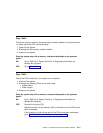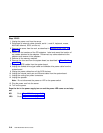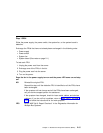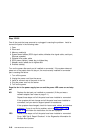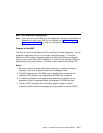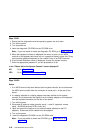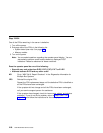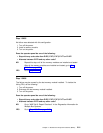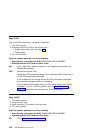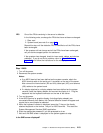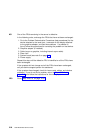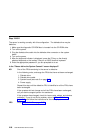
6. When the keyboard indicator is displayed (the word keyboard on an ASCII
terminal or the keyboard and hand icon on graphical display), press the F5 key
on the directly attached keyboard or the number 5 key on an ASCII terminal.
7. If the Console Selection screen is displayed, choose the system console.
8. Enter the appropriate password if you are prompted to do so.
Is the "Please define the System Console" screen displayed?
NO Go to “Step 1540-3.”
YES Go to “Step 1540-13” on page 2-28.
Step 1540-3
1. Turn off the power.
2. If an ASCII terminal has been defined as the system console, disconnect the
ASCII terminal connected to serial 1.
3. If a display attached to a display adapter has been defined as the system
console, disconnect the display from the display adapter and the keyboard from
the keyboard connector on the rear of the server.
4. Remove the server from the rack, as described in “Removing the Cover” on
page 7-3.
5. Record the slot numbers of any adapter cards installed in the server. Label and
record the location of any cables attached to the adapters and disconnect the
cables. Remove all the adapters from the server.
6. Remove the riser card from the system board, as described in “Riser Card” on
page 7-11.
7. Record the slot numbers of the memory modules. Then remove all but one of
the memory modules.
8. Disconnect the SCSI cables from the SCSI connectors (J4 and J33) on the
system board.
9. Disconnect the diskette drive cable from the diskette drive connector (J16) on the
system board.
10. Disconnect the internal serial, tablet, and ethernet port cables (J23, J24, J25 and
J50).
11. Turn on the power.
Does the operator panel do one of the following:
Stop with any code other than E1DC, E1F2, E1F3, E1F7 or E14D?
Alternate between E1FD and any other code?
NO Go to “Step 1540-5” on page 2-21.
YES Go to “Step 1540-4” on page 2-20.
Chapter 2. Maintenance Analysis Procedures (MAPs) 2-19



